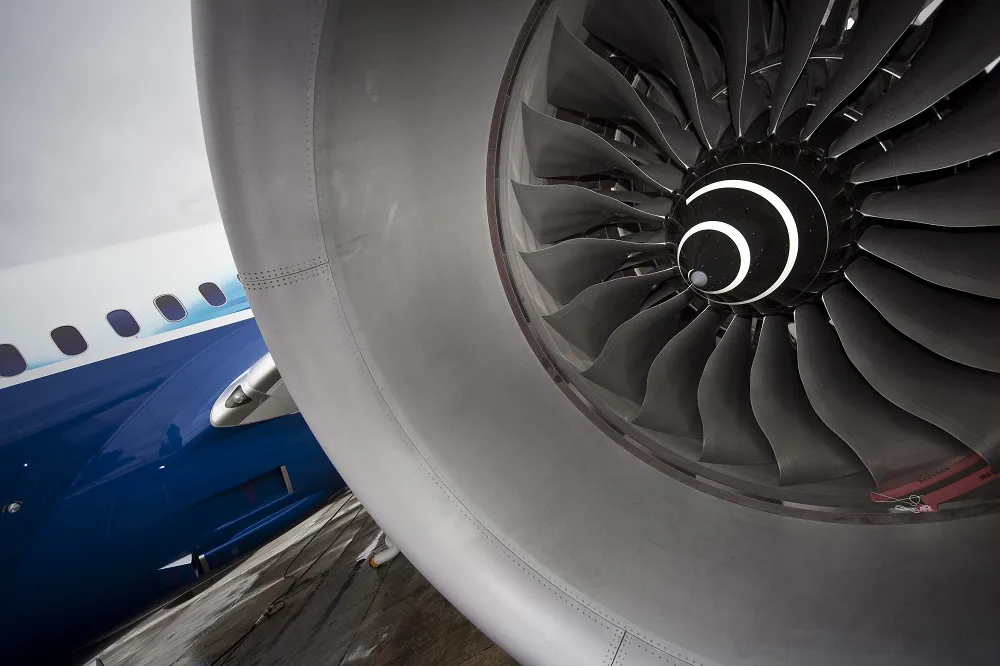
Rolls-Royce engine problems ground two Air New Zealand Dreamliners
Apr 21, 2018

Air New Zealand grounded two of its Boeing 787 Dreamliners due to concerns over Rolls-Royce engines. The decision came after reports indicated potential issues with the powerplants, specifically relating to their reliability and performance. This action aimed to ensure passenger safety and comply with aviation regulations. The airline's management is working closely with Rolls-Royce to investigate the root causes of the problems and to assess the impact on flight schedules. While the grounding may cause some disruptions, the airline emphasizes its commitment to maintaining the highest safety standards for its operations.
In recent news, two Air New Zealand Boeing 787 Dreamliners were grounded due to "Rolls-Royce engine problems". This situation has raised concerns about the reliability of "Rolls-Royce engines", which power several aircraft in commercial aviation. Understanding the implications of these issues is crucial for both airline operators and passengers. Below, we delve into the specifics of the situation, the impact on Air New Zealand, and the broader context of engine reliability in aviation.
Overview of the Grounding Incident
The grounding of Air New Zealand's Dreamliners is linked to "Rolls-Royce Trent 1000 engines", which have faced scrutiny for various reliability issues in the past. This particular incident saw the airline temporarily remove two of its aircraft from service to address potential safety concerns. The decision was made after reports indicated that the engines could experience premature wear in specific components, necessitating further inspections and repairs.
Impact on Air New Zealand Operations
The grounding of the Dreamliners has significant implications for Air New Zealand’s operations. With two aircraft out of service, the airline faces potential disruptions in its flight schedule, affecting both domestic and international routes. Passengers may experience "flight cancellations" or delays, leading to frustration and inconvenience.
To mitigate these issues, Air New Zealand has implemented contingency plans, including:
| Contingency Plan | Description |
|---|---|
| Aircraft Substitution | Using alternative aircraft to cover affected routes. |
| Increased Communication | Keeping passengers informed about potential changes to their travel plans. |
| Customer Support | Providing additional support and options for affected travelers. |
Understanding Rolls-Royce Engine Issues
The "Rolls-Royce Trent 1000 engine" has been a critical component of the 787 Dreamliner fleet. However, it has not been without its challenges. Several airlines have reported issues with the engine, including:
- "Premature wear" of certain engine components.
- "Operational restrictions" imposed by regulatory authorities.
- Increased maintenance costs associated with repairs and inspections.
These problems have led to extensive investigations and retrofitting programs aimed at improving the reliability of the Trent 1000. Rolls-Royce has committed to addressing these issues proactively to ensure safety and performance standards are met.
Broader Context of Engine Reliability in Aviation
The incidents involving "Rolls-Royce engines" highlight a vital aspect of the aviation industry: the importance of engine reliability. The safety and efficiency of commercial flights heavily depend on the performance of aircraft engines. When issues arise, they can have widespread consequences, not just for the airlines but also for passengers and the broader aviation ecosystem.
Airlines invest significantly in maintaining their fleets, and engine reliability is a key factor in operational efficiency. In the face of problems like those experienced by Air New Zealand, airlines must balance safety with their commitment to customer service. This often involves complex logistical planning and coordination with engine manufacturers.
Future Implications for Rolls-Royce and Air New Zealand
The grounding of the two Air New Zealand Dreamliners due to "Rolls-Royce engine problems" raises questions about the future of the Trent 1000 engine program. Rolls-Royce must demonstrate its ability to resolve these issues to maintain trust among its customers and stakeholders. Continued reliability problems could lead to:
- "Increased scrutiny" from regulatory bodies and airlines.
- Potential "financial repercussions" for Rolls-Royce if airlines seek compensation for disruptions.
- A shift in preference towards alternative engine manufacturers by airlines.
Air New Zealand, on the other hand, will need to evaluate its fleet composition and long-term strategy concerning engine partnerships. The airline's response to this incident will play a significant role in shaping its reputation and operational stability moving forward.
Conclusion
The grounding of two Air New Zealand Dreamliners due to "Rolls-Royce engine problems" serves as a reminder of the critical role engine reliability plays in the aviation industry. As airlines work to ensure the safety and satisfaction of their passengers, manufacturers must also prioritize the performance and dependability of their products. The outcome of this situation will not only impact Air New Zealand but could also have far-reaching implications for the relationship between airlines and engine manufacturers. As the industry continues to evolve, maintaining high standards of safety and reliability will remain paramount.
Related Articles

Explore Thailand: The Best Islands to Visit for Paradise, Adventure, and Relaxation

The Ultimate Guide to the Best Islands in Thailand for Your Next Getaway

Do babies need passports? How to get a passport for a newborn

How to get a U.S. passport fast: here’s how to expedite the process

What is Mobile Passport Control: 5 reasons why you should use it

SENTRI vs. Global Entry: A detailed guide

Do you need a passport to go to the Bahamas? Let’s find out

Do you need a passport to go to Mexico? A detailed guide

Do you need a passport to go to Canada? We got the answer

Do You Need a Passport for a Cruise: An Essential Travel Guide

Booster Seat Requirements: All the Rules to Follow in Your Rental Car

What Are the World’s Most Powerful Passports, and How Does Yours Rank?

How to Take a Passport Photo at Home: A Helpful Guide

You've got to have heart! Southwest's new livery

Your opinion: Should water be free on low cost carriers?

Young women bolder than guys as solo travellers
